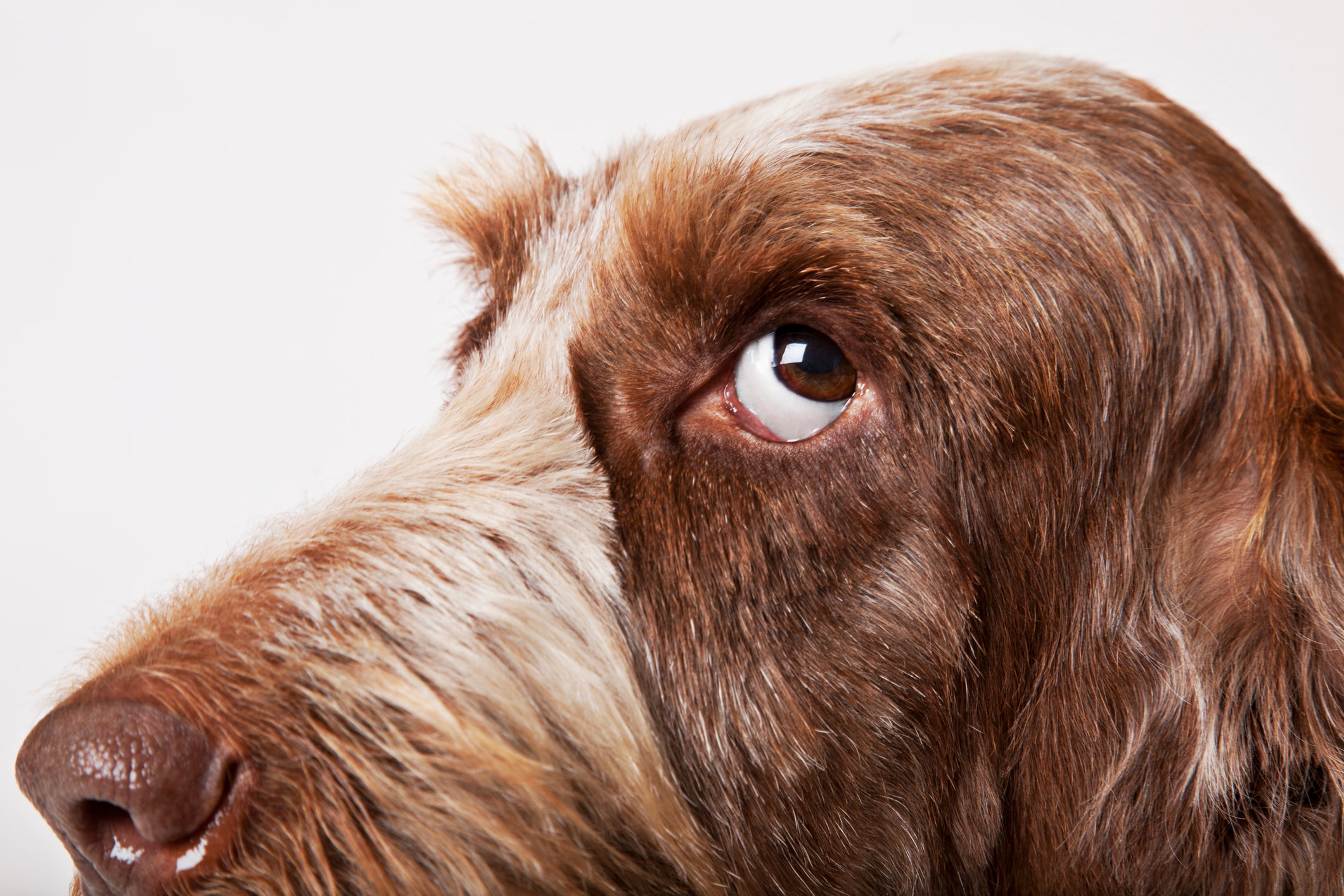Has your dog been scratching a lot more than usual recently? Perhaps you even found some little red bumps on his skin? Your furry friend could be suffering from acne, or pustular dermatitis.
“Dog acne looks like little red bumps around the muzzle, in the hair follicles, but can be on any part of the dog’s body,” says Dr. Amy Tate, a veterinarian and co-owner of Riverview Animal Clinic in Birmingham, Alabama. “It is actually a pocket of bacterial infection with pus around it located on the dog’s skin.”
What Causes Dog Acne?
According to Dr. Tate, “acne or pustular dermatitis is caused by bacteria that gets into the skin.” This bacteria usually gets in at your dog’s hair follicle and creates a pustular red bump, she says. “It can become a chronic problem for dogs with heavy facial folds or short-haired breeds because the hair follicles get inflamed easier, usually from contact with some kind of irritant, drool or just getting their skin wet.”
Where Do Dogs Typically Get Acne?
“You can find these little pustules and red bumps on every part of the body,” warns Dr. Tate. As such, it is crucial that you perform a thorough examination of your pet’s skin. If you have a long-haired dog, you or your groomer might have to comb through his hair to find the acne or feel around to discover any bumps along his back.
But if your pet’s acne is caused by flea bites, you should be able to feel these bites first. In this scenario, the acne, which occurs after the flea attack, is generally more inflamed and red than the bites themselves.
Do Dogs of All Ages Get Acne?
According to Dr. Tate, “puppies can have puppy skin issues all their own.” If you’re worried that your puppy might have acne, you should “first look for things like skin mites, mange or scabies infections,” which can appear to be acne but are actually, “two mites that live beneath the surface of the skin in the hair follicles.”
If your puppy is having serious skin issues, Dr. Tate stresses that you should take her to the vet immediately. “You need to eradicate the underlying problem and get a proper diagnosis with puppies,” she says, as acne can be difficult to treat otherwise.
According to Dr. Tate, acne in older dogs can be caused by allergies and contact irritants, such as fleas. If bacteria gets into your dog’s sores, this can lead to pustular dermatitis.
For more information on allergies, check out Dog Allergies: Helping Your Pet Cope.
What Types of Treatment Options Are Available?
When it comes to treating dog acne, Dr. Tate recommends that you start out with some topical treatments, like shampoos or antibacterial astringents. But, “if after a few skin soothing shampoos (like an oatmeal bath) you are not seeing any improvements, and your dog is still scratching a lot and the red bumps are still there, you’ll want to go visit your vet,” she says, as some cases of dog acne need to be treated with antibiotics.
According to Dr. Tate, you should be wary if your dog has very red and weepy skin, scratches a lot or has many lesions all over his body. If these conditions apply to your pet, he probably needs “to be on an antibiotic and something to help stop the scratch and itch cycle in the body, like a steroid or antihistamine.”
How Can You Prevent It?
The combination of anti-itch and antibiotic treatment can also be used a preventative measure, especially if your dog has chronic skin issues. “When a dog scratches, he ends up spreading the bacteria and infection to other parts of the body and makes the problem worse,” says Dr. Tate.
Other preventative measures you can take are based on the applicable causes. For instance, if your dog’s acne is caused by irritants, such as flea bites, you can help prevent any further issues by working to remove and treat the fleas.
Similarly, if your dog’s acne is caused by an allergic reaction, you should start by finding out what is triggering this reaction so you can take the necessary measures to prevent further breakouts. For instance, you should talk to your vet about potential changes to your dog’s diet, as he may be allergic to ingredients in his dog food, and talk to your dog walker about what plants your dog comes into contact with.
How Long Does Acne Usually Take to Heal?
According to Dr. Tate, “a mild to moderate case of dog acne should clear up in around 10 to 14 days with proper treatment,” but this is not always the case. “Some dogs can have antibiotic-resistant cases, and can get reoccurring infections, and some of those dogs take weeks, to even months to clear.”
Amy Aitman is a freelance writer who writes lifestyle and parenting articles, including some for pet parents. She has her own little Westie (with skin issues) that is now almost 14 years old.
* This article is for general informational purposes only. It is not intended nor implied to be providing medical advice and is not a substitute for such advice. The reader should always consult a health care provider concerning any medical condition or treatment plan. Neither Care.com nor the author assumes any responsibility or liability with respect to use of any information contained herein.





